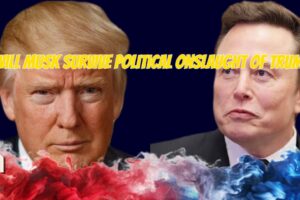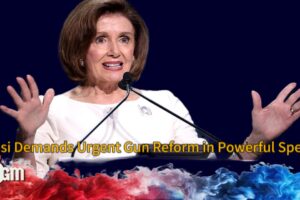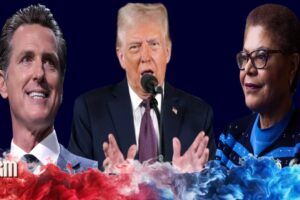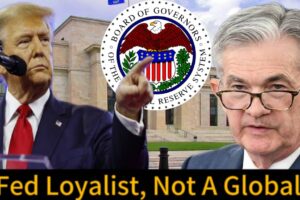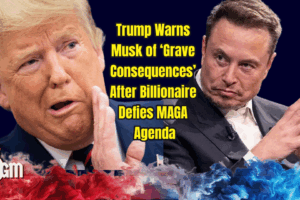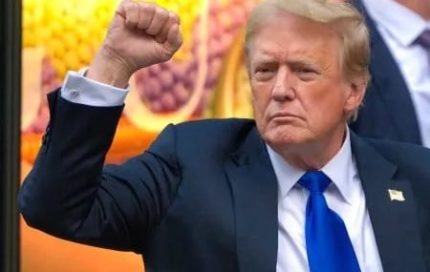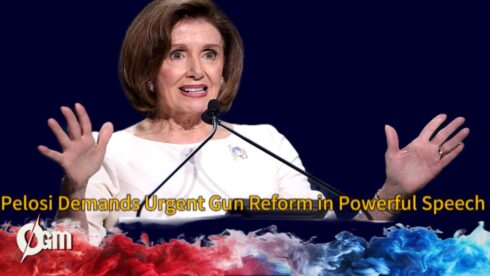Former President Donald Trump’s has once again turned his attention to corporate tax rates, promising to cut them further if he is re-elected. Speaking to a gathering of CEOs at the Business Roundtable, Trump pledged to reduce the corporate tax rate to 20%, a move that he claims would benefit profitable US companies significantly. The current rate, set at 21% during Trump’s first term, had already marked a substantial reduction from the previous 35%.
This proposed tax cut aligns with Republican ambitions to extend the 2017 tax cuts, particularly the reductions for individuals that are set to expire after 2025. The promise to make these cuts permanent while also lowering the corporate rate suggests a continued focus on stimulating economic growth through tax reductions. However, the financial implications of such cuts could result in significant shifts in federal revenue, potentially intensifying debates on government spending and fiscal policy.
A Vision for Regulatory Changes and Tariffs
In addition to promising tax cuts, Trump vowed to slash regulations if he returns to the White House. This commitment to deregulation mirrors his previous administration’s efforts to reduce bureaucratic hurdles for businesses. The promise was well-received by the CEOs present, many of whom argue that excessive regulation stifles economic growth and innovation.
Moreover, Trump suggested increasing tariffs as a means to fund these tax cuts. This idea, while appealing to some protectionist sentiments, overlooks the economic burden that tariffs can place on American consumers. Higher tariffs on foreign goods typically lead to increased prices domestically, effectively acting as a hidden tax on consumers. Trump’s campaign has defended the proposal, claiming that higher tariffs on foreign products could offset tax reductions for American workers.
Intraparty Dynamics and Policy Proposals
Trump’s meetings with Republican lawmakers revealed a complex interplay between policy discussions and personal grievances. Reports indicate that what was meant to be a strategic conversation about a 2025 policy agenda was largely overshadowed by Trump’s personal vendettas and reflections on past political battles. Despite this, Trump did touch on significant policy issues, including his stance on abortion and his desire to eliminate taxes on service workers’ tips.
The reaction from Republican lawmakers was mixed, with some viewing the meeting as a pep talk rather than a substantive policy discussion. Speaker Mike Johnson expressed gratitude for Trump’s supportive comments about the GOP leadership. However, the lack of detailed policy discussion left some lawmakers questioning the direction of Trump’s agenda.
Ultimately, Trump’s visit to Capitol Hill underscored his enduring influence within the Republican Party and highlighted key areas of focus for his potential second term. His promises of tax cuts and regulatory rollbacks continue to resonate with the party’s base, setting the stage for ongoing debates on economic policy and fiscal management.
Trump’s Promised Tax Cuts: A Sweeping Proposal
At a rally in New Jersey last month, former President Donald Trump promised a new wave of comprehensive tax cuts if he wins the upcoming election. Trump’s proposal, dubbed the “Trump middle class, upper class, lower class, business class big tax cut,” aims to offer substantial reductions across all income levels and business categories. This ambitious plan, while appealing to a broad spectrum of voters, raises questions about its feasibility and economic impact.
Trump’s tax cut proposal is designed to contrast sharply with President Joe Biden’s approach. Biden has committed to preserving the lower tax rates for individuals earning less than $400,000 a year while increasing taxes on the wealthy and large, profitable businesses. This divergence in tax policy reflects a fundamental difference in economic philosophy between the two candidates. Trump’s proposal suggests a more expansive reduction in taxes, which he believes will stimulate economic growth and benefit all classes of Americans.
Financing and Implications of the Proposed Tax Cuts
One of the critical issues surrounding Trump’s tax cut proposal is how it will be financed. Lael Brainard, director of Biden’s National Economic Council, expressed concerns about the potential burden these cuts could place on middle- and low-income Americans. Historically, major Republican tax cuts for the wealthy or corporations have often resulted in increased financial pressure on these groups. Brainard emphasized that this trend is likely to continue if Trump’s plan is implemented.
According to HuffPost’s Jonathan Nicholson, Brainard outlined four potential methods the GOP might use to offset the cost of the tax cuts. These include utilizing revenues from a proposed 10% across-the-board tariff on imported goods, cutting entitlement programs such as Social Security and Medicare, reducing annual federal agency and program spending excluding defense, or borrowing and adding the tax cut costs to the public debt. Each of these methods carries significant implications for the American public, suggesting that the promised tax cuts could come with hidden costs that ultimately impact citizens’ financial well-being.
Brainard’s comments underscore the complexity and potential consequences of sweeping tax reforms. As the election approaches, the contrasting tax policies of Trump and Biden will remain a central issue for voters, highlighting the broader debate over economic strategy and fiscal responsibility in the United States

